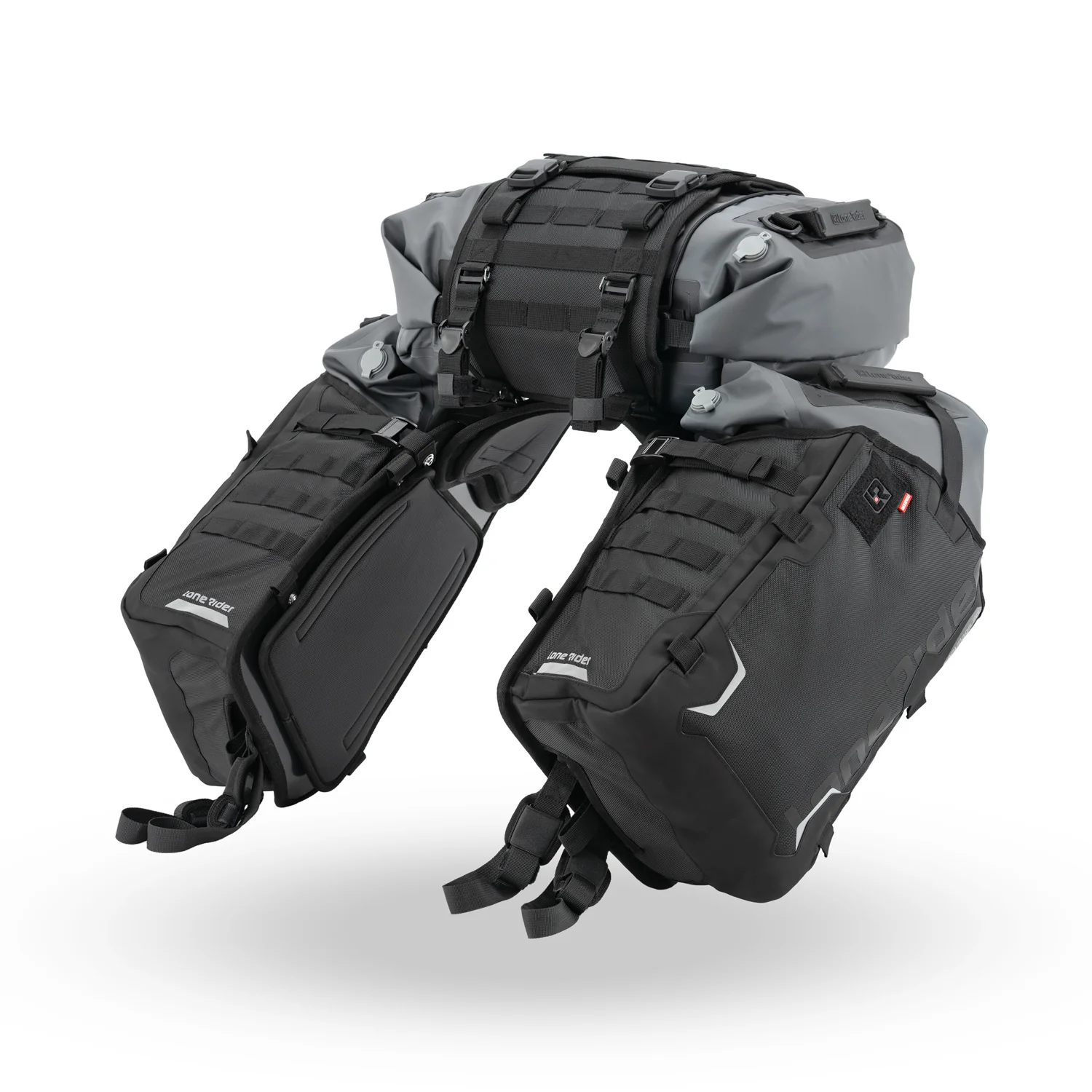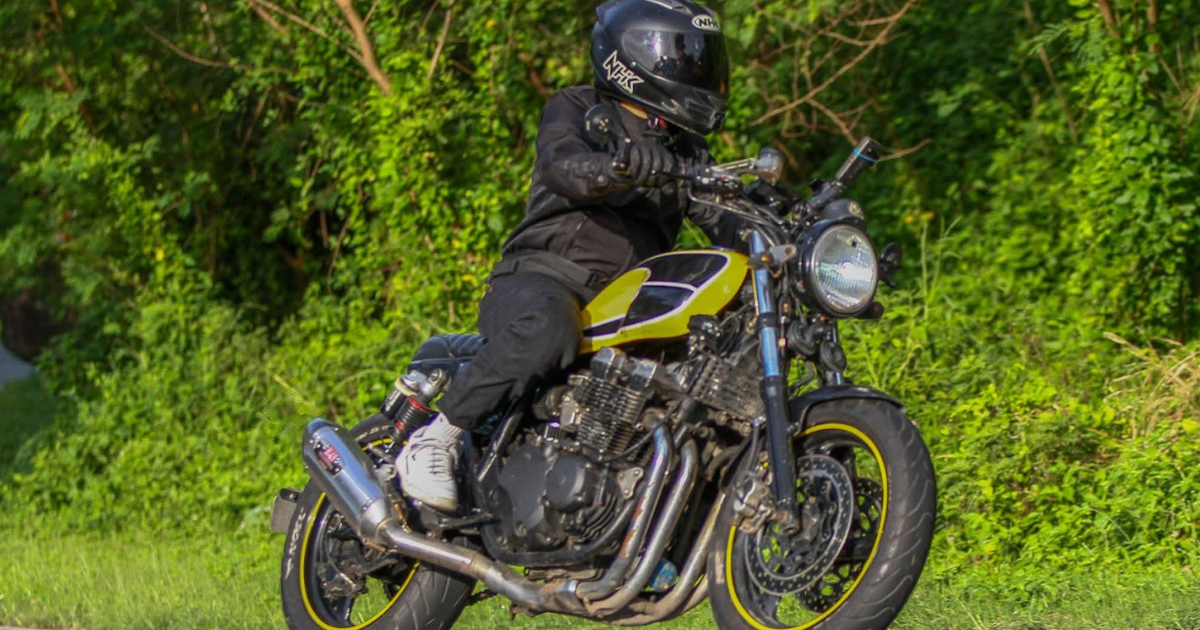
Lone Rider: I Tested New ADV Bags on a Two-Week Texas Trial
left for contents
Hi guys! I’m finally back in these fantastic Swedish forests again. And I know a lot of you have been curious about the Lone Rider ADV bags—especially since they’re breaking off a bit from the big racked bag systems they’ve done so far. If you’ve been following them online, you’ve probably seen the teasing they’ve done around their new ADV soft luggage. Well, I’ve had the chance to test them, and I’m here to share my full experience.
This article is based on the video by Robert Baldinger.
A Sneak Peek Before Launch
So, I basically have the best job in the world because Lone Rider reached out to me before my Texas trip and said, “Hey, this won’t hit the market for a few more months, but here’s a prototype—pretty much the final version. Bring it with you, ride it, and let us know how it goes.”
So I did! I brought it to Texas with me, rode with it for two weeks straight, and gathered a lot of hands-on experience that I want to share here. If you’re looking at bags and weighing all the different brands out there, this is a new addition that’s worth checking out.
A versatile, universal-fit 70 L rackless luggage system built for off‑road adventures, offering easy packing, waterproofing, and modular carrying convenience.
- All-day carry handles and backpack straps
- Magnetic buckles for quick, glove‑friendly use
- Air valves and Super Seal closures lock out dust and water
- Durable base plate adapts to most bikes (universal fit)
The Setup: Rackless System with a Base Plate
Let’s start with the basics. The ADV bags are a rackless system with a single base plate that fits pretty much any bike. It’s a three-piece setup:
- Two side holsters, 25 liters each
- One top-mounted duffel, 20 liters
- That brings the total storage to 70 liters
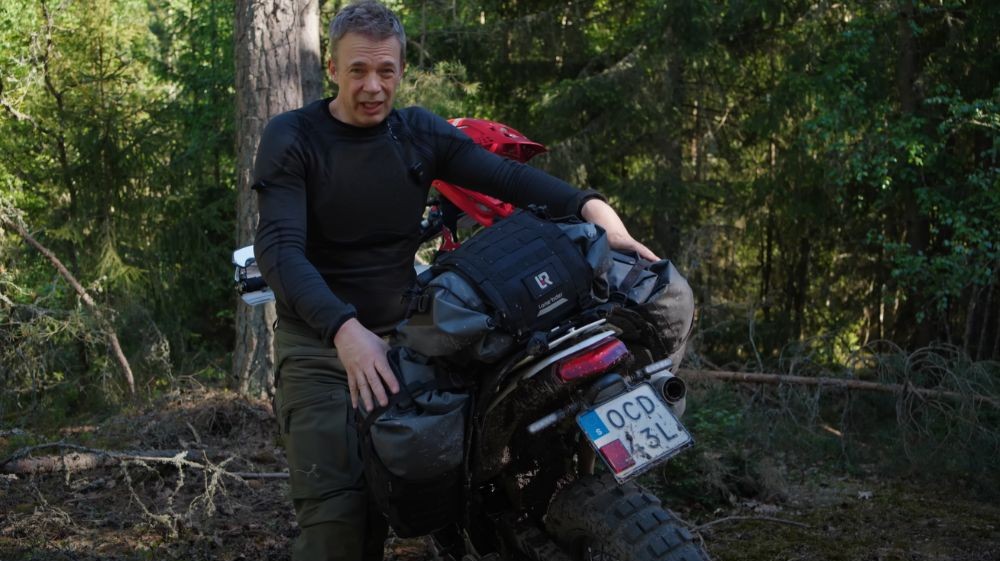
You can adjust the side bags by rolling them up or down a bit, but standard capacity is 25L per side. The system came delivered in parts, and I assembled it myself before the trip.
Assembling the Base Plate
Let’s jump over to the garage. So, the setup begins with the base plate. Three main parts make up the system. You’ve got the middle plate, which we screw together using four threaded holes. There’s only one size—it’s designed to be flexible and fit around different widths of bikes.
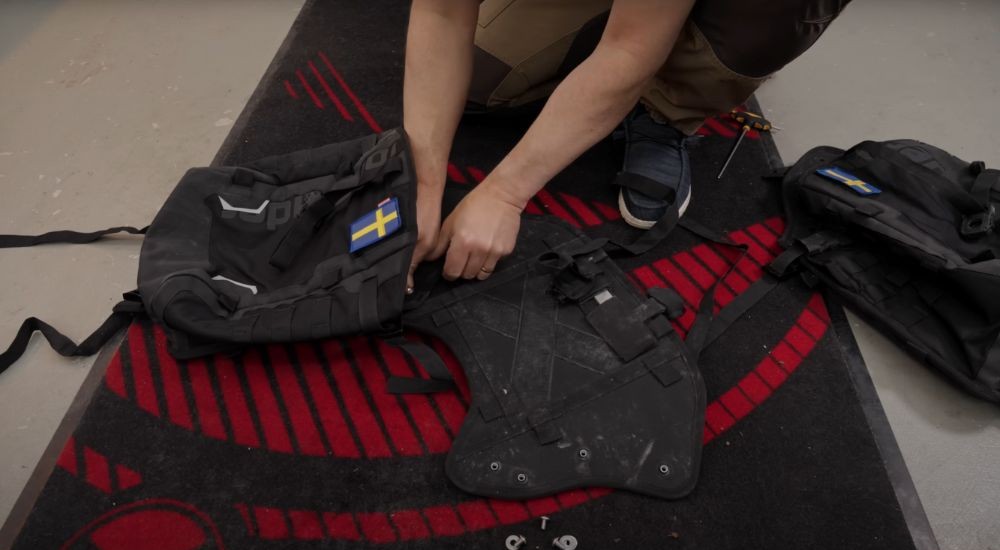
There’s foam on the back to protect your bike from rubbing, but be warned—dust will get between your bike and the foam eventually. I had a bit of it left from the last ride. If you’re riding rackless, your plastics may get rubbed a bit. You can use plastic wrap to help with that, but personally, I don’t really care.
The flexibility of the base plate is key. That’s why it works on so many different bikes—it wraps around the rear of the frame quite nicely.
Strapping It On
There are two straps per side that keep the system stable. Because the bags are rectangular, those dual straps really help with stability. I used the luggage loops on my bike to tie them down. You could use other mounting points too, depending on your setup.
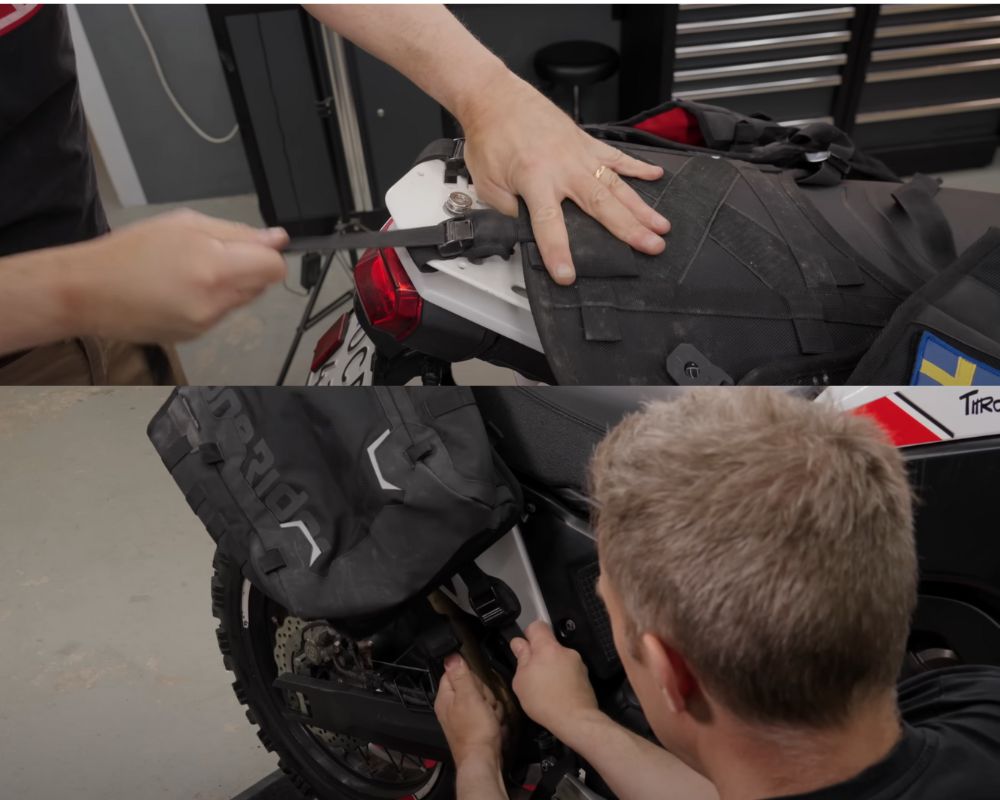
The system snugged up really well against the frame. Then there’s the beaver tail, which I didn’t use during the Texas ride because I had my cowboy hat strapped in its place—and I had to improvise a cowboy hat mount for that. (Yes, Lone Rider, maybe you need to make a cowboy hat bag next.)
But seriously, the beaver tail was super easy to attach with two hooks—click, click. You may not always want it, so it’s nice that it’s fast and modular.
Touring with the Top Duffel
Now let’s talk about the top duffel. It’s a 20-liter roll-top with backpack straps, which makes it easy to carry when you’re off the bike. The beaver tail hugs the duffel from the top to keep it secure.
Inside, there are some handy storage compartments. One side has zippered pockets and is water-protected—though I wouldn’t say it’s 100% waterproof, it would take a lot to get water in there. On the other side, there’s a zippered plastic compartment.
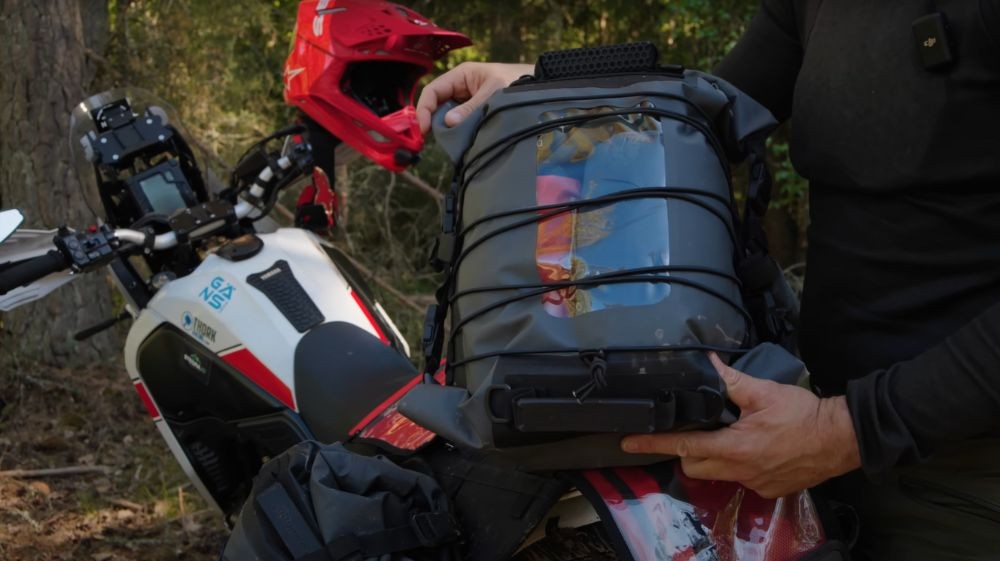
There’s velcro underneath so it sticks to the base and doesn’t move around too much. The lining is made of a grippy, soft plastic that helps keep it in place. Plus, there’s an air vent—when you roll it up, you can open the valve and push the air out, so it packs down tight.
Side Bags: Everyday Performance
The side bags open with just two straps, which I appreciated during my two-week trip because I was constantly packing and unpacking every single day.
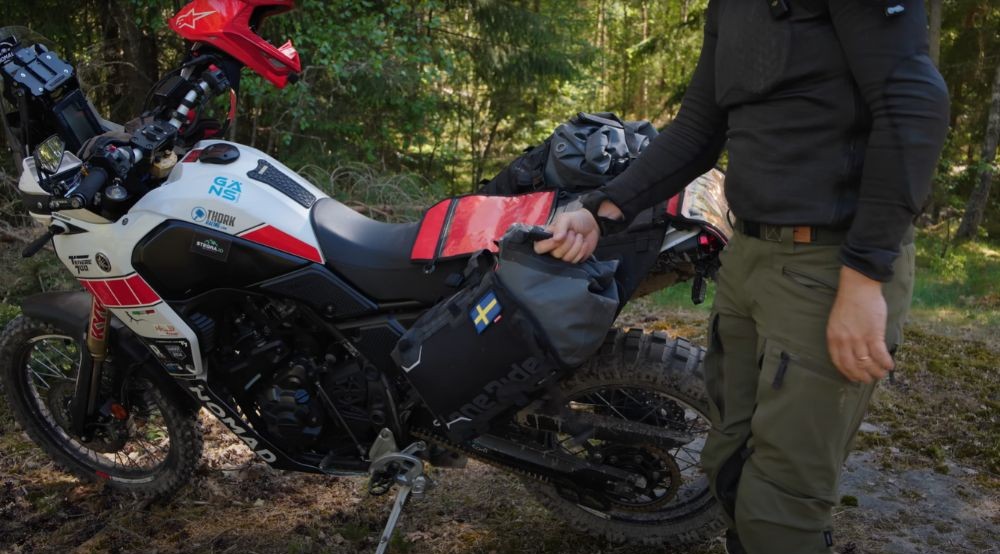
They’re made with thick rubber and Cordura—super tough but not overbuilt. Lone Rider made a conscious decision not to go full nuke-proof with these. Instead, they added smart convenience features, like the air valve I mentioned earlier.
Magnetic Buckles: Surprisingly Nice
I’ve gotta say, one thing I really enjoyed was the magnetic buckles. They click together super easily—just snap them and they’re locked. Press the button to release, and that’s it.
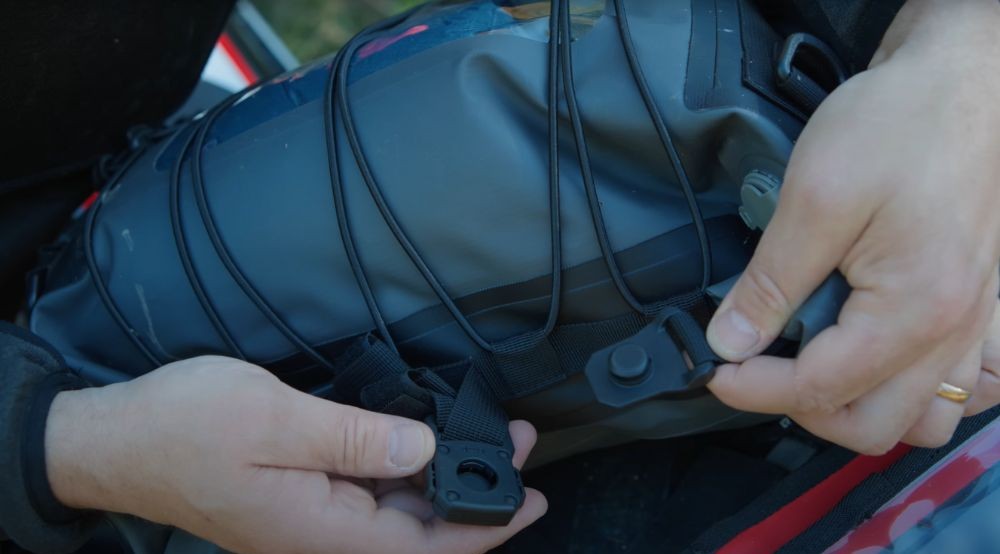
Sure, they’re not bomb-proof. There are moving parts, maybe springs, so long-term durability will depend on use. But after two weeks of daily packing and unpacking, they held up great and were a joy to use.
Stability and Fit on the Bike
The base plate gives the entire system structure. It sits pretty securely. If you go super bumpy, you might get a bit of flex—maybe a few centimeters—but it’s nothing that would disturb your ride.
As for exhaust clearance, I had zero issues. My bike has a low exhaust, which is even better, but the kit also comes with a heat shield just in case.
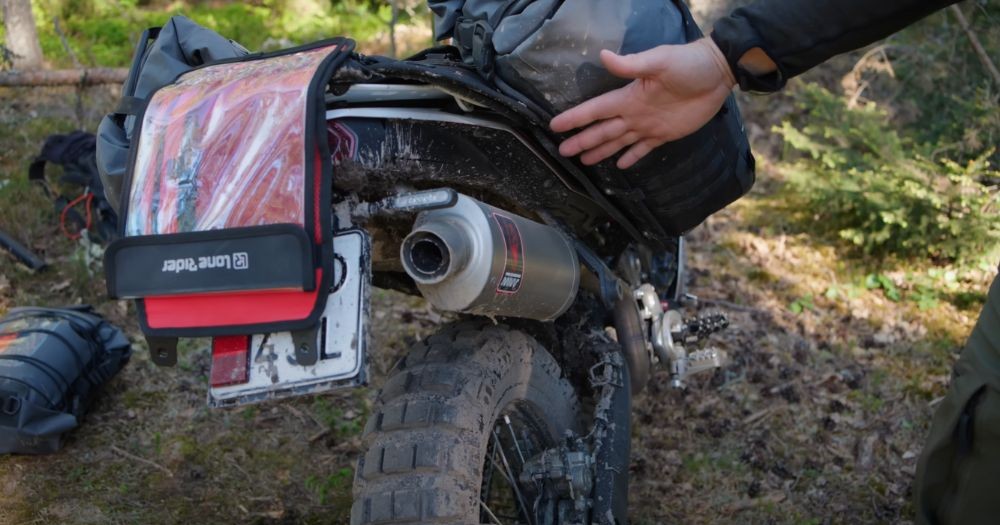
Versatility: Customize It Your Way
Like I mentioned earlier, during the Texas trip I didn’t use the beaver tail or duffel. My riding buddy Johan had a different setup entirely. That’s because the system is full of anchor points—molle webbing on the beaver tail, the sides, and even the bottom of the bags.
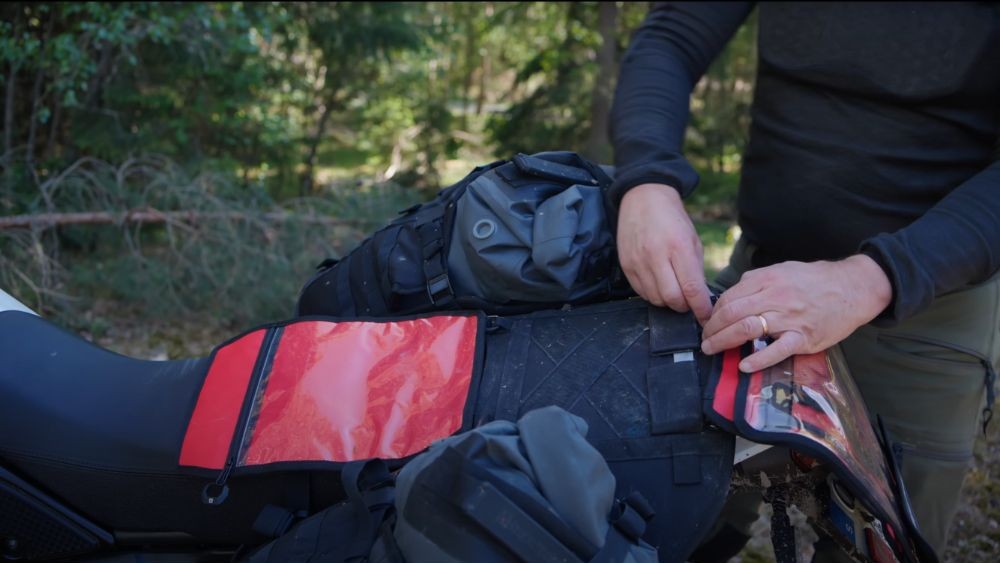
If you’re into customizing your loadout, you can strap pretty much your whole life to this system.
A Few Extras in the Final Version
Now, my version was a pre-production model. From what I know, the final version won’t have any major changes—but it will include a couple of extras:
- A tent pole bag
- Rear base plate fastening loops for bikes without anchor points
Those loops are meant to be drilled, which is more common for smaller bikes.
Final Thoughts: Should You Buy?
So there you have it—that’s my experience with the Lone Rider ADV bags. I didn’t drag them under a semi-truck to test their durability, but they’ve held up great so far. The ease of use, the clever buckles, and the overall fit made them a joy to use.
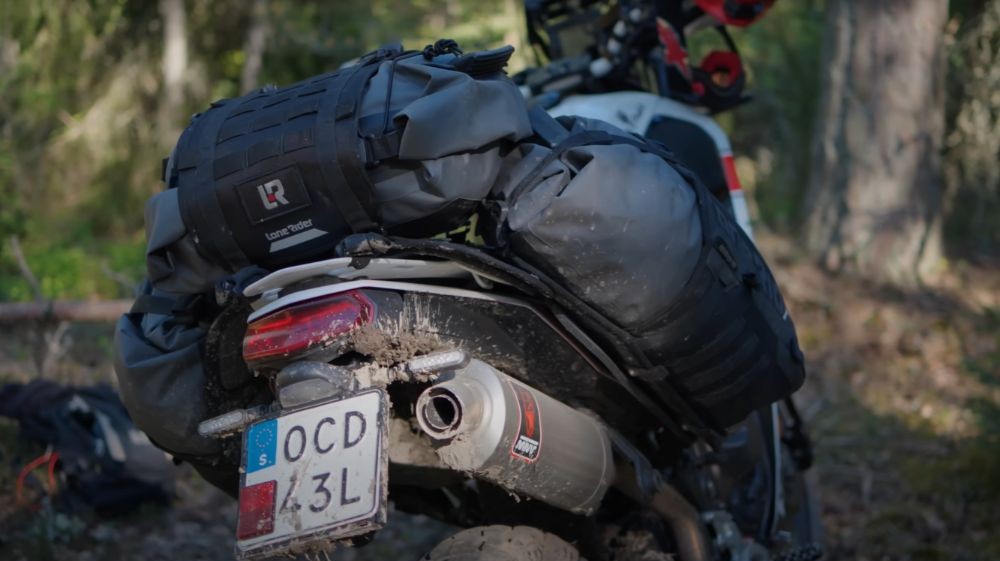
If 70 liters is something you need, this is a really solid option. I try to stay minimal when I can, but I know at some point I’ll appreciate the volume these offer.
Always good to see someone else’s take before you pull the trigger, right?
Until Next Time…
So that’s it. Hope you get out there—big or small adventure, doesn’t matter.
Pack your bags and ride your bike safely.
See you in the next one.
A versatile, universal-fit 70 L rackless luggage system built for off‑road adventures, offering easy packing, waterproofing, and modular carrying convenience.
- All-day carry handles and backpack straps
- Magnetic buckles for quick, glove‑friendly use
- Air valves and Super Seal closures lock out dust and water
- Durable base plate adapts to most bikes (universal fit)
Related
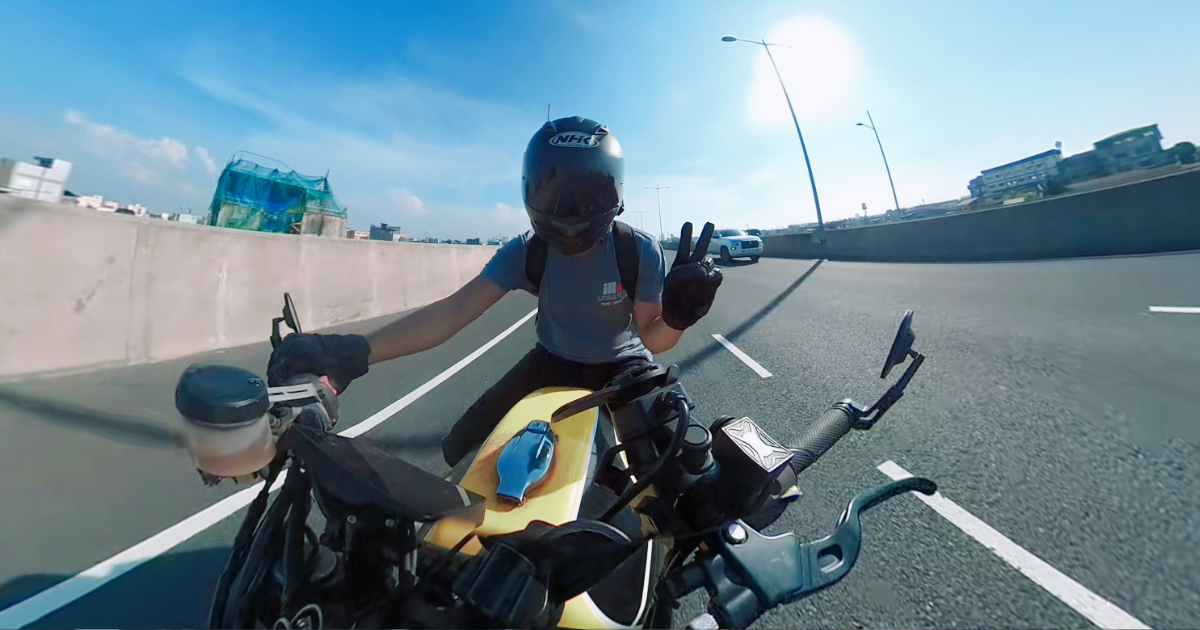
Pando Moto Onyx 02 Gloves Review: The Break-In That Changed Me
Too tight at first, perfectly molded after break-in. Quality leather gloves worth the patience for classic motorcycle riders.

